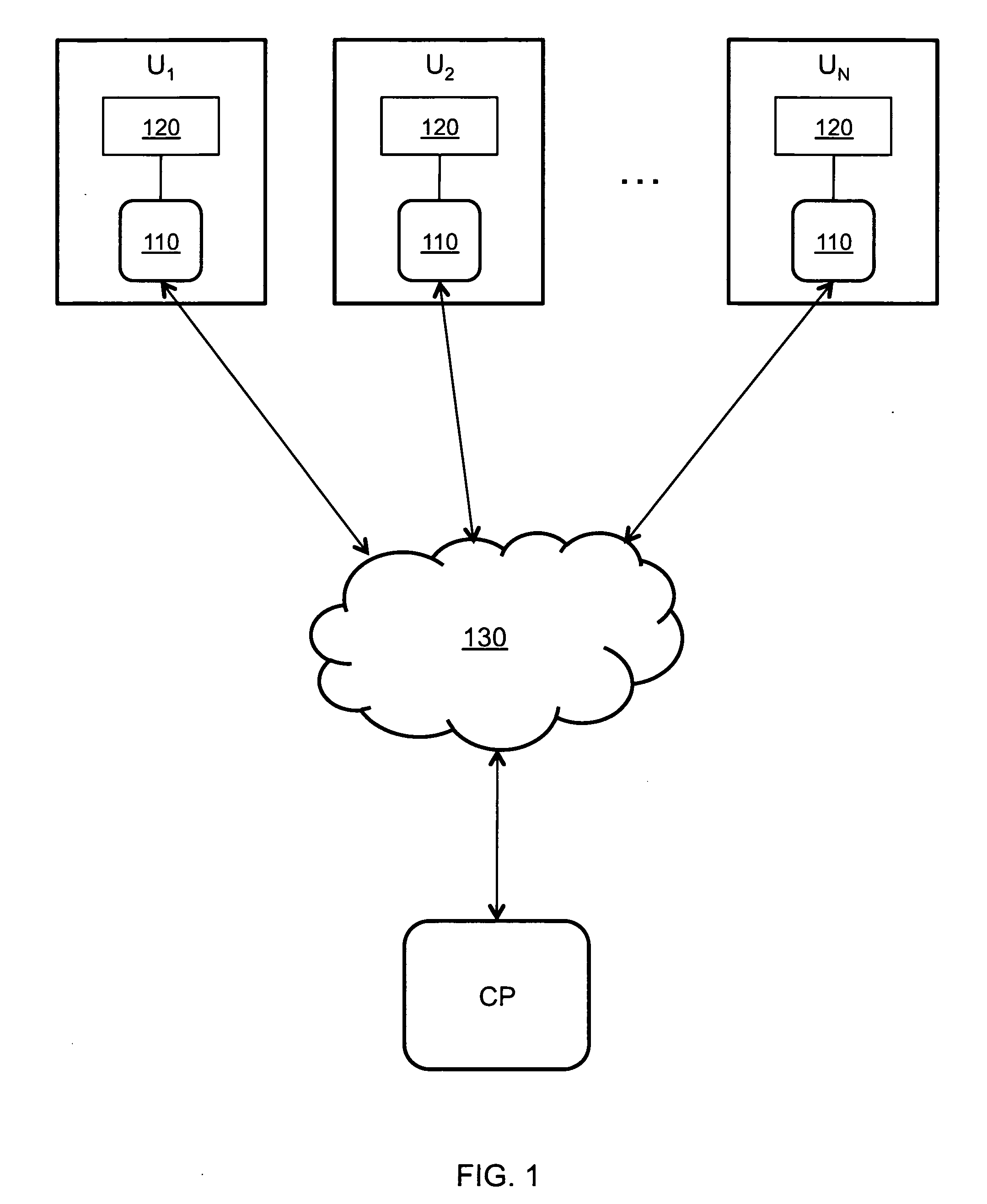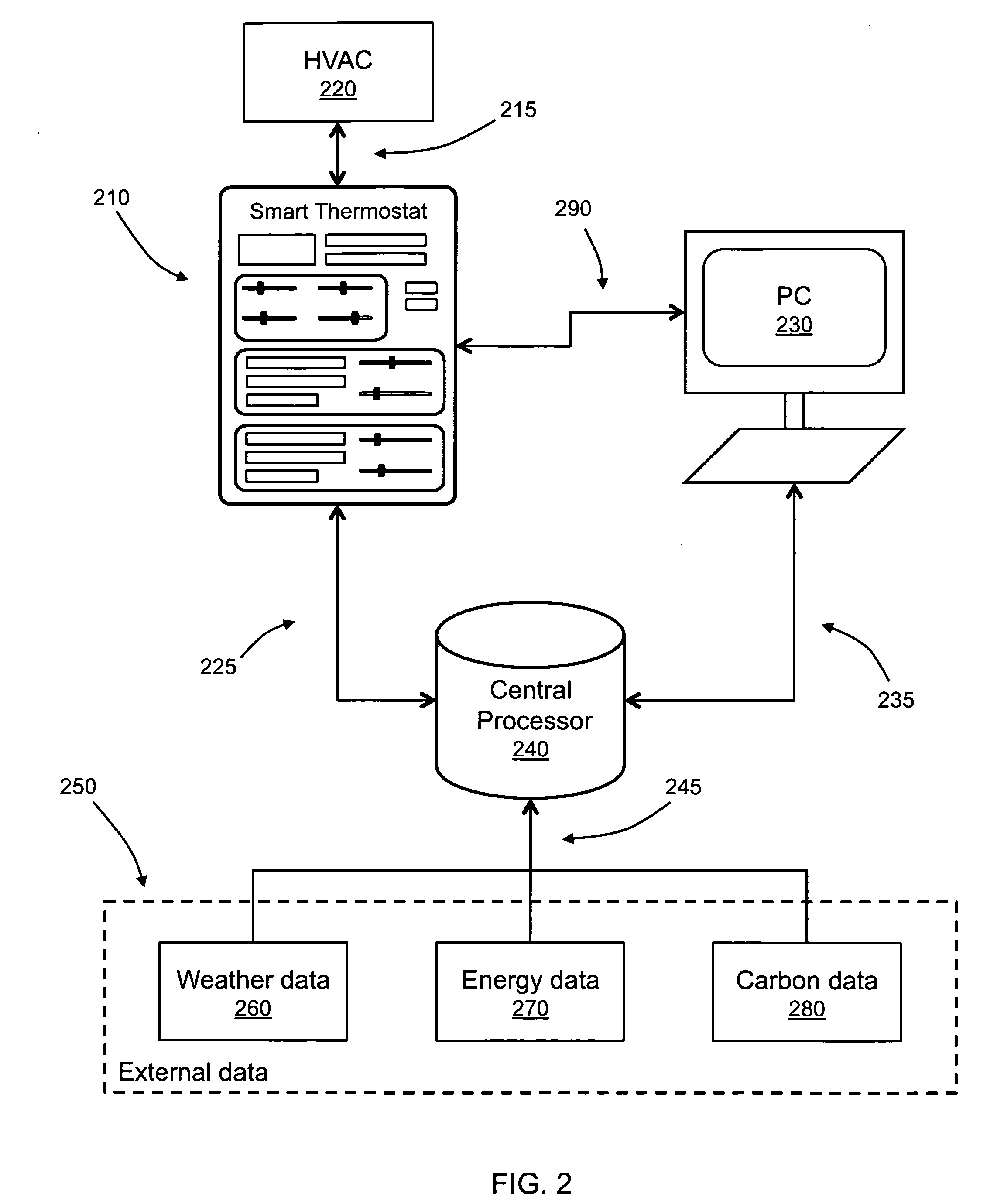Incentive allocation based on thermostat settings
a thermostat and incentive technology, applied in the field of thermostats, can solve the problems of limited energy storage capacity, overpowering the capacity of energy suppliers, and consuming enormous energy for heating and cooling of residential and commercial buildings, and achieve the effect of reducing energy consumption and effective energy managemen
- Summary
- Abstract
- Description
- Claims
- Application Information
AI Technical Summary
Benefits of technology
Problems solved by technology
Method used
Image
Examples
Embodiment Construction
[0020]Energy resource management can be a difficult task. In particular, existing energy management schemes at the city utility level or in a multi-user community, typically lack methods for encouraging energy consumers to reduce or change their energy consumption. The present invention is directed to allocation of incentives to users based on energy consumption behavior, such as the thermostat settings, of the users.
[0021]FIG. 1 shows a community of users U1-UN and a central processor CP connected to a network 130, such as the Internet. Each of the users of the community has a thermostat 110 that directs a climate-controlling device 120, such as a heating, venting, and air conditioning (HVAC) unit. In an embodiment, the climate-controlling device 120 of each user controls the temperature, or other climate condition, of all or part of a room or building. A setting function is provided for the users U1-UN to adjust settings on the thermostats 110. The thermostat settings are communic...
PUM
 Login to View More
Login to View More Abstract
Description
Claims
Application Information
 Login to View More
Login to View More - R&D
- Intellectual Property
- Life Sciences
- Materials
- Tech Scout
- Unparalleled Data Quality
- Higher Quality Content
- 60% Fewer Hallucinations
Browse by: Latest US Patents, China's latest patents, Technical Efficacy Thesaurus, Application Domain, Technology Topic, Popular Technical Reports.
© 2025 PatSnap. All rights reserved.Legal|Privacy policy|Modern Slavery Act Transparency Statement|Sitemap|About US| Contact US: help@patsnap.com



